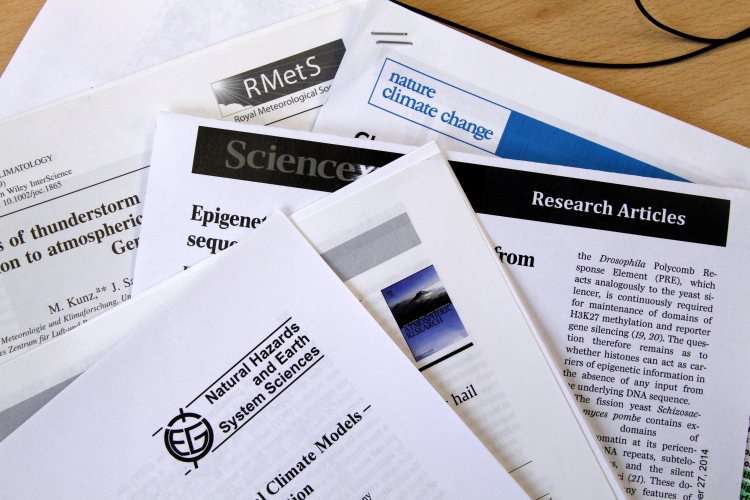Frisch erschienen
Piper, D. and Kunz, M. (2017): Spatio-temporal variability of lightning activity in Europe and the relation to the North Atlantic Oscillation teleconnection pattern. Nat. Hazards Earth Syst. Sci. Discuss., doi:10.5194/nhess-2017-35, in review.
Abstract: Comprehensive lightning statistics are presented for a large, contiguous domain covering several European countries such as France, Germany, Austria, or Switzerland. Spatio-temporal variability of convective activity is investigated based on a 14-year time series (2001–2014) of lightning data. Based on the binary variable thunderstorm day, the mean spatial patterns of lightning activity and regional peculiarities regarding seasonality are discussed. Diurnal cycles are compared among several regions and evaluated with respect to major seasonal changes. Further analyzes are performed regarding interannual variability and the impact of teleconnection patterns on convection.
Mean convective activity across central Europe is characterized by a strong northwest-to-southeast gradient with pronounced secondary features superimposed. The zone of maximum values of thunderstorm days propagates southwestward along the southern Alpine range from April to July. Diurnal cycles vary substantially both between different months and regions, particularly regarding the incidence of nighttime lightning. The North Atlantic Oscillation (NAO) is shown to have a significant impact on convective activity in several regions, pointing to a crucial role of large-scale flow in steering spatio-temporal patterns of convective activity.
Mohr, S., Kunz, M., Richter, A., and Ruck, B. (2017): Statistical characteristics of convective wind gusts in Germany, Nat. Hazards Earth Syst. Sci. Discuss., doi:10.5194/nhess-2016-402, in review.
Abstract: Due to the small-scale and non-stationary nature of the convective wind gusts usually associated with thunderstorms, there is a considerable lack of knowledge regarding their characteristics and statistics. In an effort to remedy this situation, we investigated in this study a set of 110 climate stations of the German Weather Service between 1992 and 2014 to analyze the temporal and spatial distribution, intensity, and occurrence probability of convective gusts.
Similar to thunderstorm activity, the frequency of convective gusts decreases gradually from South to North Germany. No further spatial structures, such as a relation to orography or climate conditions, can be identified regarding their strength or likelihood. Rather, high wind speeds of above 30 m s−1 can be expected everywhere in Germany with almost similar occurrence probabilities. A comparison of the 20-year return values of convective gusts with those of turbulent gusts demonstrates that the latter have higher frequencies, especially in northern Germany. However, for higher return periods, this effect can be reversed at some stations.
The values of the convective gust factors are mainly in a range between 1 and 4 but can even reach values up to 10. Besides the dependency from the averaging time period of the mean wind, the values of the gust factors additionally depend on the event duration and the storm type, respectively.

